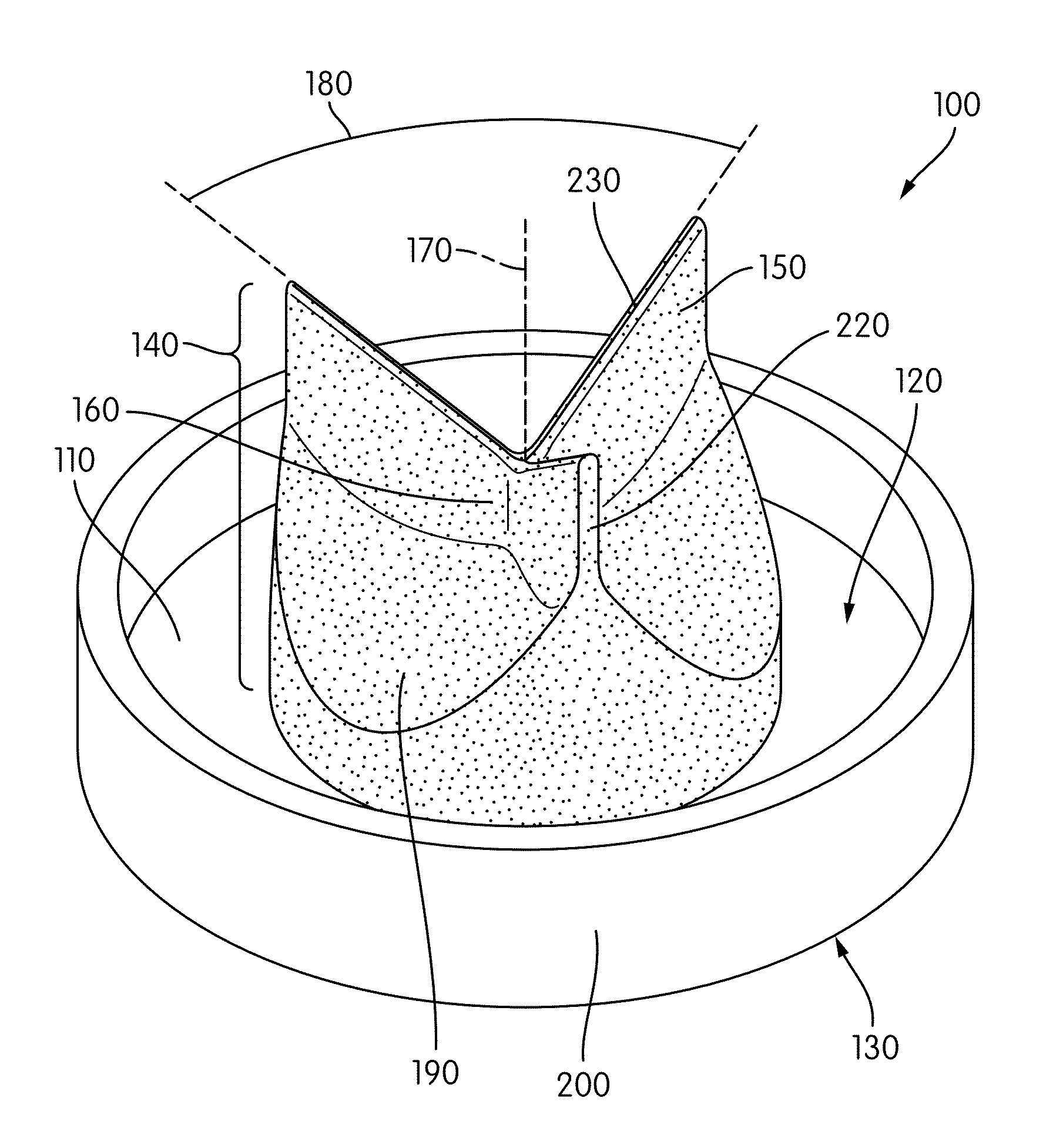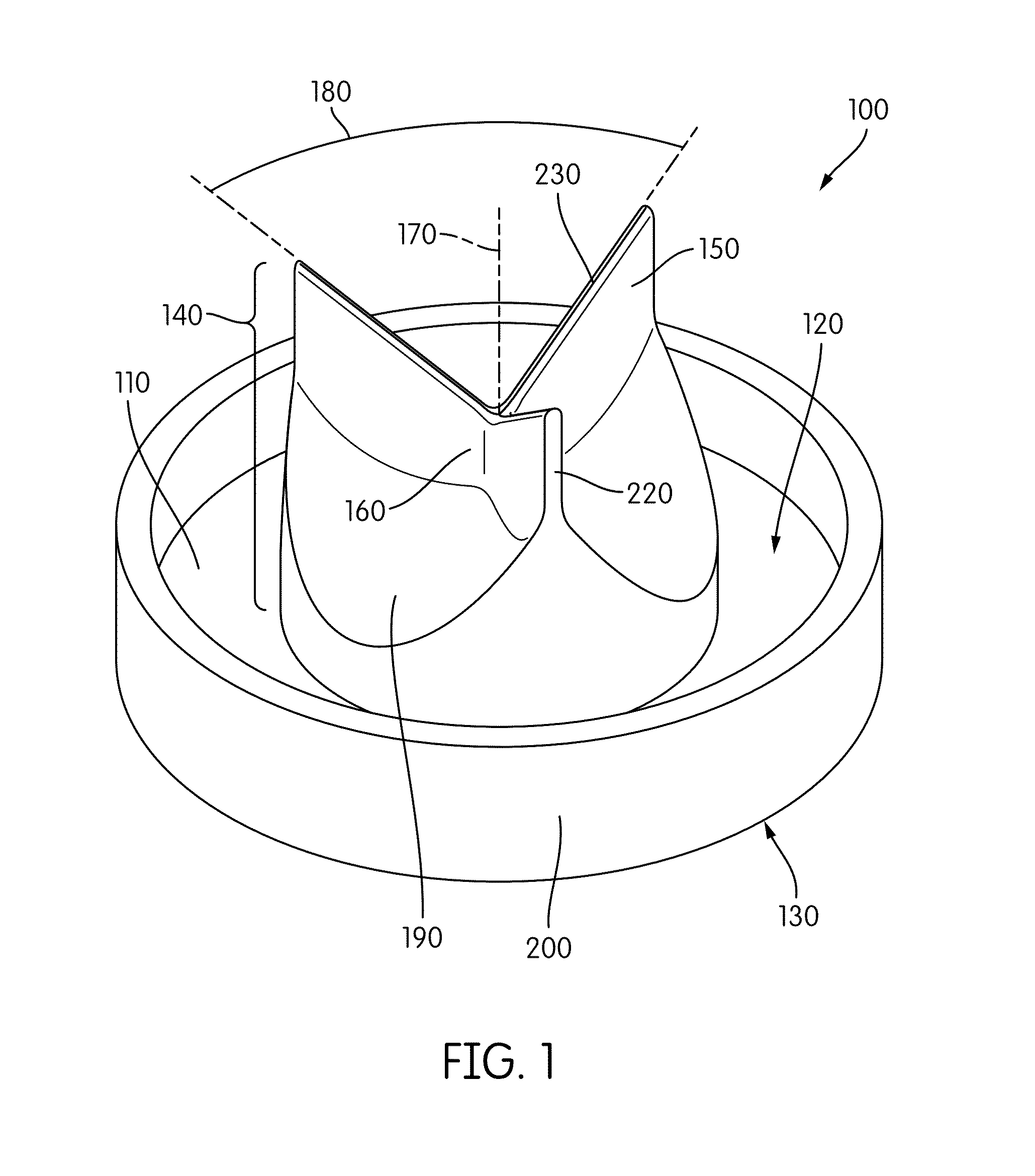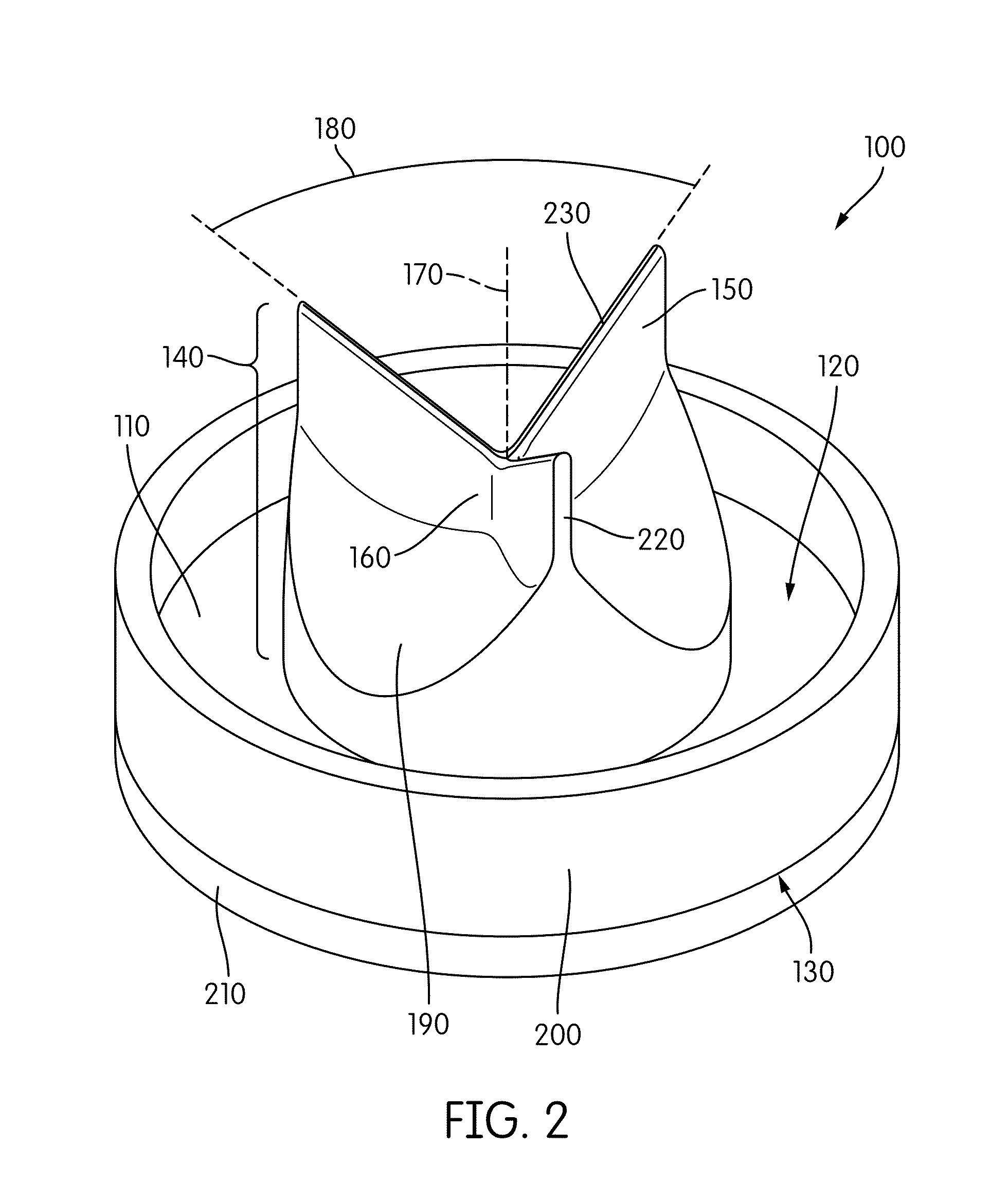Cardiac valve prosthesis
a heart valve and prosthesis technology, applied in the field of implantable cardiac prosthesis, can solve the problems of poor cardiac function, heart failure, inability to meet the body's demands, etc., and achieve the effect of reducing thrombosis and reducing thrombosis formation
- Summary
- Abstract
- Description
- Claims
- Application Information
AI Technical Summary
Benefits of technology
Problems solved by technology
Method used
Image
Examples
example 1
[0041]This study was designed to test the hypothesis that aortic valve closure surgery, as currently practiced, produces abnormal aortic root flow patterns that lack the sinus vortices and instead exhibit regions of stagnation that reduce aortic washout, and that a prosthesis shaped like the closed aortic valve and designed to fit over the aortic valve orifice will reestablish advantageous flow patterns such as sinus vortex formation, and result in a consistent and improved outcome compared with the current techniques. The aims of the study were to (1) quantitatively measure the flow field in the aortic root of a LVAD-assisted heart in a cardiac simulator using Digital Image Particle Velocimetry (DPIV), and (2) use this method to compare the circulation with two different prosthetic valve closure designs.
[0042]A mock circulatory loop, which included a glass aorta connected to an LVAD (HEARTMATE II LVAD, Throatec Corporation), was designed to simulate flow in the aorta while supporte...
PUM
 Login to View More
Login to View More Abstract
Description
Claims
Application Information
 Login to View More
Login to View More - R&D
- Intellectual Property
- Life Sciences
- Materials
- Tech Scout
- Unparalleled Data Quality
- Higher Quality Content
- 60% Fewer Hallucinations
Browse by: Latest US Patents, China's latest patents, Technical Efficacy Thesaurus, Application Domain, Technology Topic, Popular Technical Reports.
© 2025 PatSnap. All rights reserved.Legal|Privacy policy|Modern Slavery Act Transparency Statement|Sitemap|About US| Contact US: help@patsnap.com



